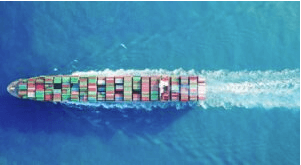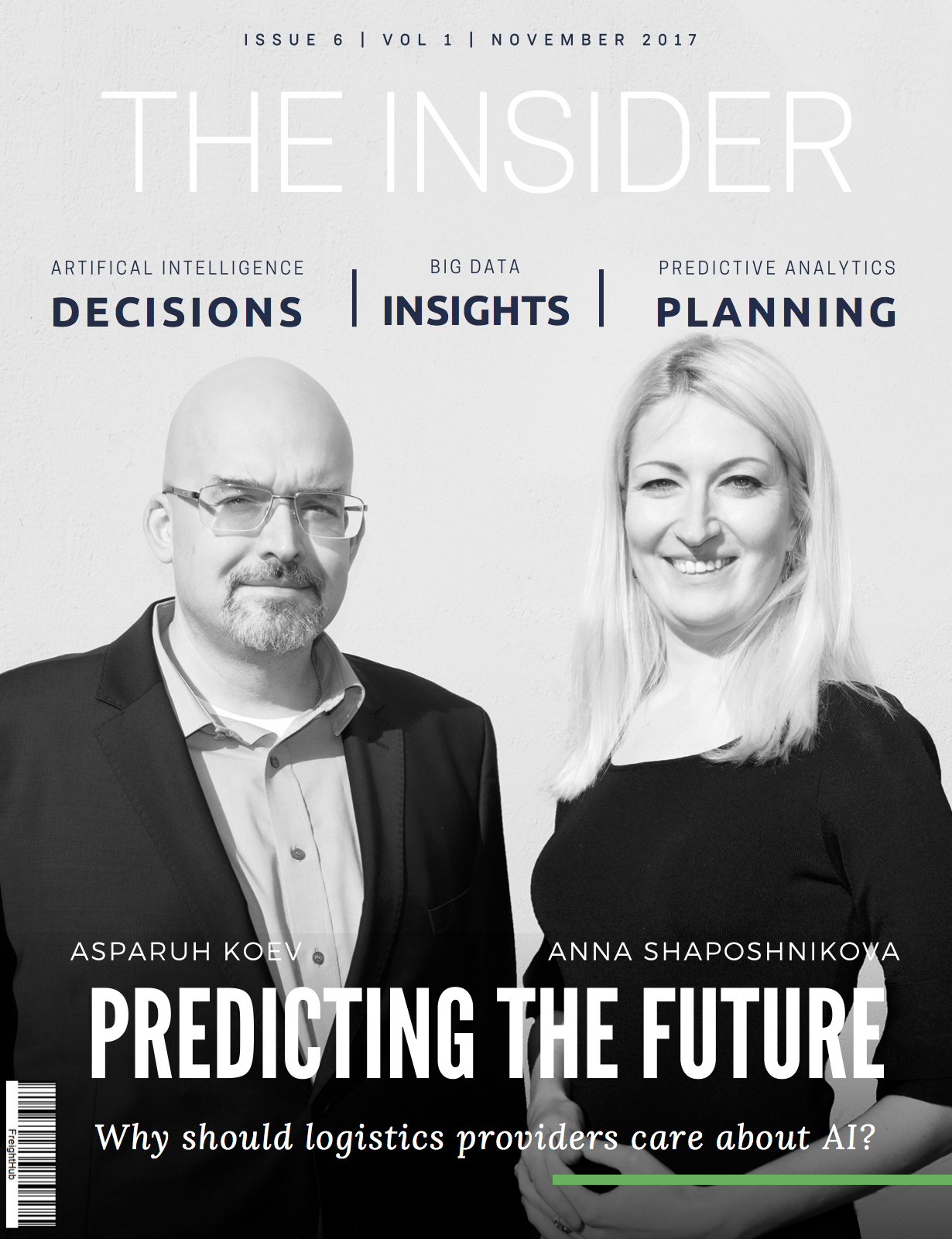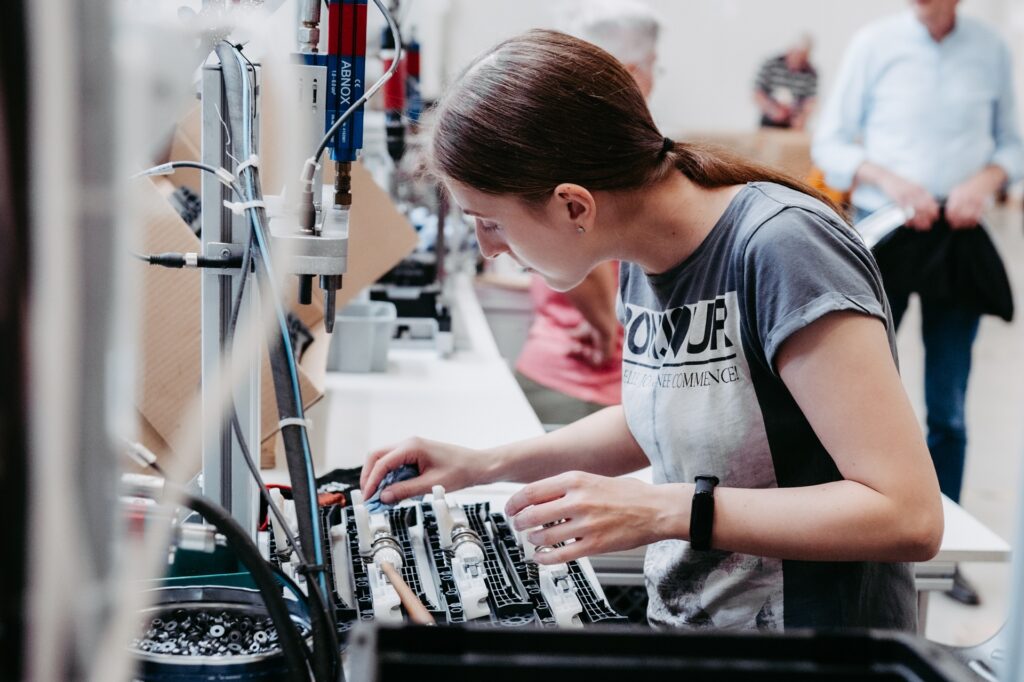The latest Insider finds itself chatting with Asparuh Koev, CEO, and Co-founder of Transmetrics. Transmetrics is a predictive optimization company which helps cargo transport companies and logistics service providers to be more efficient through the use of modern technology such as artificial intelligence (AI), data mining, predictive analytics and computer optimization.
What services does Transmetrics provide?
We help our customers save a significant portion of their operational costs, in particular, transportation costs. We do this by helping them plan for optimal transportation capacity. There are 4 main steps in the process:
- Step 1 – Data cleansing and enrichment by the use of artificial intelligence and advanced statistical methods. The issue that many transport companies have is that their data is not clean so they don’t have process transparency. They are unable to measure their efficiency gains, and because the data is generated at multiple points and entered by people, the data quality cannot be easily improved at source. What we do instead is we invest in artificial intelligence algorithms which can look at the data, identify the issues and improve the data quality to the level where the significant transparency on the businesses is gained.
- Step 2 – Forecasting – Make this information predictive so not to focus primarily on historical performance but instead focus on future performance. In that process, we build forecasts for what the demand and supply will be for the next few weeks. This enables companies to visualize the problem areas while they are still in the future and they can be corrected by proactive action.
- Step 3 – Optimization – This step is about helping the planners and dispatchers in making decisions based on the forecasted information. The software can help you with suggestions on where to increase or decrease capacity in order to be very efficient, and this is done with artificial intelligence and complex stochastic optimization algorithms.
- Step 4 – Execution Controlling – In the last step, transport companies can monitor how the optimized plan was implemented and whether there were any deviations from it.
All of these steps are packaged in the Software as a Service product which is offered on a monthly subscription basis. It takes just a few months to implement within the transport company and then the company can already start getting significant savings.
How and why did you decide to get into this type of business?
Prior to Transmetrics, my current co-founder Anna and I were running a consulting firm for IT projects in cargo transport industry. We saw that transport companies had problems with optimizing their capacity – too much spare capacity, too much space in their vehicles, too many empty containers sitting around, and too many trucks which were only used for 1/3 of the time. But as consultants, we could never do anything about it because it required a systematic software-based approach. So that’s why in 2013 we decided to step out of the consulting arena and build a software product to take this idea to market.
What are AI, big data, and predictive analytics?
AI is currently the most overhyped thing. There is this misguided belief that one day, computers are going to be smarter than people. That they are going to take many jobs from us and that they are going to start a war against people. In actuality, computers cannot be people because they lack creativity, imagination, and they cannot think abstractly. Artificial intelligence is a set of algorithms which can provide very complicated outputs and decisions based on incoming data. So when you have an individual stream of data such as anything from transport shipments to video and audio data coming from a self-driving car, AI is the software that can make decisions that are much more complex than what traditional software can make.
For example you have an incomplete shipment data. You have the weight or the density, but you do not have the dimensions. AI can systematically go through the shipment data, look and learn about how past shipments behaved and then it can come up with precise deductions about all the properties for each shipment. This is something that probably people could do, but then you would need an army of people who understand the business in detail in order to do it precisely and consistently. Of course, it would be very expensive, while artificial intelligence can do it with just a computer running.
Big data is any data which is on the brink of the current computing abilities to process. It is like the ancient Egyptians’ library of Alexandria because you could not have read all the volumes in the library of Alexandria in your lifetime. In comparison, volumes of data, which are not very well connected to other data sources, can be viewed as Big Data if they cannot be dealt with by traditional data processing application software.
Big Data’s advantage is that you can see patterns in it. So much data is gathered about the world and, if we can use it properly, we can start seeing patterns which we are not aware of. This could give us insights into various cases ranging from spotting potential terror acts to spotting a truck which is about to go out empty.
Predictive analytics is about building models which try to tell us about the future. What you need to know about predictive analytics is that, first of all, it’s impossible to predict the future. What you can do, though, is to have a model which with a certain degree of accuracy corresponds to what will happen later. But there is always the possibility to have deviations, because no model is perfect, especially when you have to predict the behavior of people. It is only possible to predict it for large groups of people, while the behavior of a single person is very complex. What is even more important is that predictive models are never good at predicting the unknown unknowns, or the black swans as they are sometimes called.
However, predictive models can work very well in a situation when for example one of your competitors goes out of business, or 5 major customers doing sales campaigns at the same time, or a massive snowstorm slowing down traffic. Or even worse, all of these happening at the same time which makes it increasingly difficult to predict what will happen. Even in these extreme situations a predictive algorithm will tell you what to expect, and roughly what is the best course of action.
Why should logistics providers care about AI, big data, and predictive analytics? What are the benefits? Are there drawbacks?
This is a very competitive marketplace with very low profit margins. All the traditional methods to improve the bottom line are already adopted. As a result, you have to look at new methods in order to become more efficient. At the same time, the current level of efficiency is very low. On average, the capacity utilization of trucks is still less than 50 percent. Trucks and containers are used for 1/3 of the time only. In addition, shipments are spending more time sitting around waiting for transport rather than being moved. All of these are optimization opportunities which have been very resistant to traditional technologies. But AI, big data, and predictive analytics are the right toolboxes to fix them. The benefits are big cost savings that you can result in doubling or tripling the profit of the company.
Are there drawbacks? Well, the drawbacks are that the more you optimize the system the less resistant it becomes to unforeseen events. So if you have a lot of spare capacity and suddenly you have a last minute customer who wants to ship a large volume of goods, then you can probably handle the order. While if you have optimized your business quite a lot, then you might not have any spare capacity and you may have to turn down the customer. Nevertheless, the long-term effect of a highly optimized business will significantly outweigh the downside.
Can you provide an example of the benefits of predictive analytics?
One of our large customers is using Transmetrics’ predictive analytics software to forecast expected shipping volumes one week in advance and to optimize the amount of trucks needed to deliver all the shipments. This company has been able to reduce truck departures by 25%. As a result, an 8-9 percent total cost saving has been achieved. In addition, the company has improved pricing accuracy by measuring the delivery cost of each parcel and identified low or negative margin customers and adjusted their pricing accordingly.
How big of a challenge is it to convince corporations to trust AI, big data and predictive analytics?
You don’t convince corporations, you convince people. And then different people have different levels of challenge. Of course, the CEO of the company wants to have these technologies. He wants the company to be unique and to be different from others. So they are relatively easy to convince to try it. The operational people might feel threatened because of this misconception about AI, which eventually, is going to eat our jobs. So they may be resistant at the beginning, but the key is to explain to them the fact that we are not giving something to take away their jobs. Instead, we are offering them a powerful instrument to make them much better at what they are doing, and that this tool is going to give them more time to think strategically, rather than dealing with small details of the daily operations. Generally speaking, it is a challenge, but since it has transformative benefits, people find it hard to resist giving it a try.
What is your biggest piece of advice for companies to do before venturing into implementing AI/predictive analytics?
That’s an easy one. The biggest piece of advice that we can give is to start with improving the data quality. If you try to put the data that you have right now into the predictive algorithm, it is going to predict things, but they’re not going to be what you need. Instead, the algorithm is going to bring back very low-quality predictions. Improving the data quality is something which is very difficult to do. That’s why my second piece of advice, even though it’s a bit self-serving, is to bring in someone who really understands what they are doing with AI and predictive analytics. If you decide to do it by yourself, at the end of the day, you will have a team which is continuously allocated to improving the data quality, while in reality it can be done automatically by software.
What is the single biggest mistake a company can make when implementing AI/predictive analytics?
It is related to the previous question. The biggest mistake is starting from the end (optimization) rather than from the start. If you start from the end, you are going to have very disappointing results because of the initial poor data quality. It will look like optimization does not work for you, while in reality you are just putting the wrong data in the system. So always start at the beginning from improving data quality, and only then move into predicting future and optimizing your business based on the forecasts.
What’s your advice for companies on how to measure and determine success after implementing AI/predictive analytics?
If you implement it right, benefits will be apparent. Even if there is no transformative strategic change in the company, you still can see the benefits. For example, if your average truck utilization was 75% before, and now it is 80%, you have to decide whether to give credit to the AI software or to the team that achieved the savings. It is often much better to praise your team. If you are trying to say that the AI improved the company, then you are creating distrust in the people who will start thinking again in the paradigm of artificial intelligence taking away our jobs and that is not the goal. Saying “hey, team, you worked hard and achieved 5% higher loading factor” can actually make your team more motivated, and make them use the AI tool even more to get further savings.
What is the outlook for this market?
I believe the market for AI and predictive analytics is going to grow over the next few years. The most recent Gartner Hype Cycle features “AI Everywhere” as one of the three mega-trends among the emerging technologies, because AI and predictive analytics can be applied in so many industries and the potential impact can be enormous. As a result, the world will need a lot of specialists who know how to work with data science, artificial intelligence, machine learning and so on. The shortage of such specialists is already a serious constraint, and even though their number will increase over time, the competition for such talent will remain fierce.
What is next for Transmetrics?
We already have a quite powerful and complex software which handles all of the steps that I have described: data cleansing and enrichment, forecasting, optimization, and execution controlling. We have spent the last four years on creating and building the platform that at the moment has been successfully applied to the first set of customers. Transmetrics’ solution has optimized networks for parcel and pallet transport companies, for example DPDgroup.
What is next is to extend the platform for other use cases within logistics companies. For example, our optimization software could be applied in asset management for trucks and containers. It can also be used in warehouses for optimizing the staff, the processes in the warehouse, the positioning of pallets and few other things. Truckers could benefit from predicting and managing the return trips, while airlines and a few other price-sensitive sectors could improve their price management through our predictive analytics software. Lastly, it can be used for procurement if you are buying 3PL logistics services. So the goal is to develop the company where we have very powerful and transformative business case for every single logistics service provider which exists. And in order to do that, we are raising additional funding at the moment, which is mainly going into developing these additional use cases.
A big thanks to Asparuh for his thoughts. To find out more about Transmetrics be sure to check out their website.








